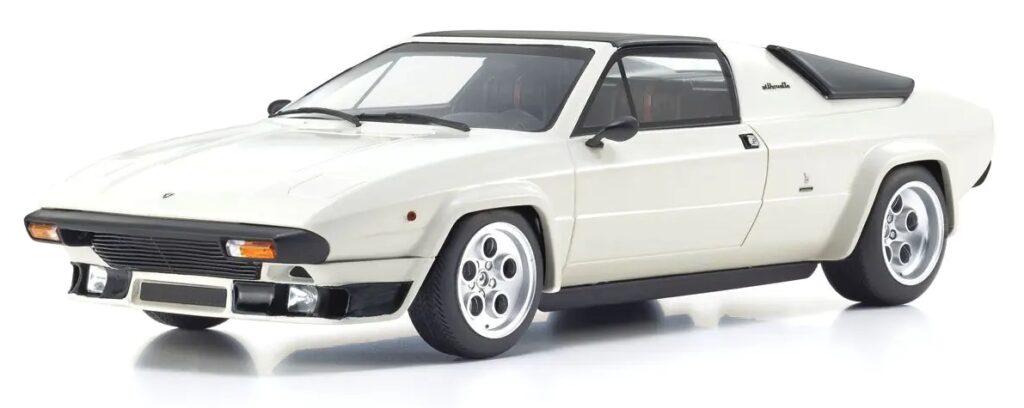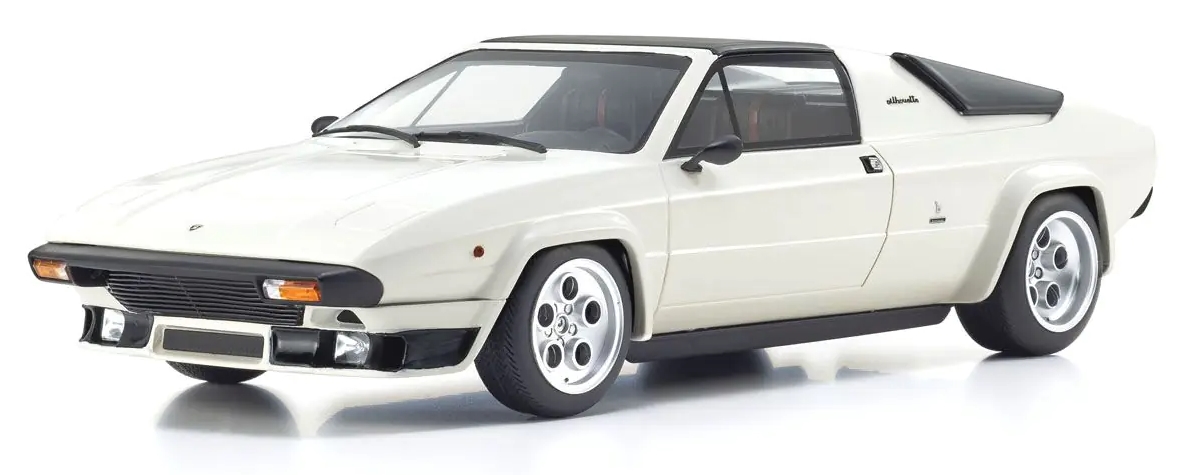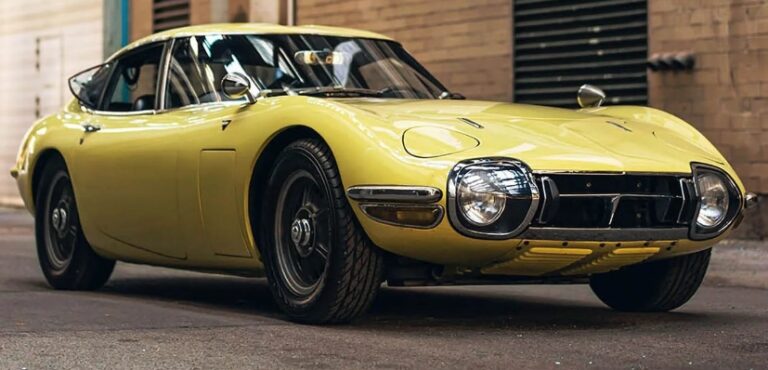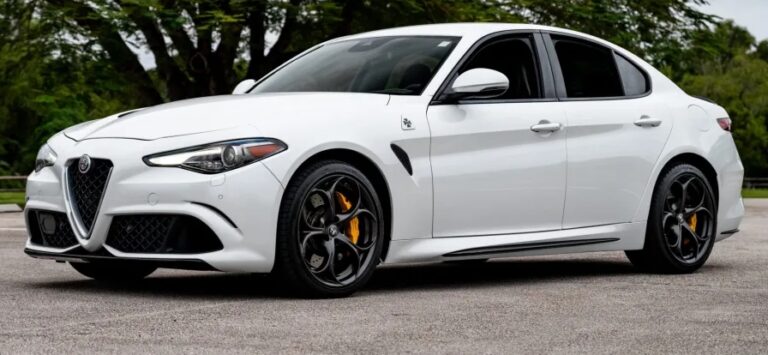The Evolution of the Lamborghini Silhouette
The Lamborghini Silhouette stands as an iconic chapter in the storied history of Lamborghini, embodying the brand’s bold design philosophy and engineering prowess during the late 1970s and early 1980s. Though produced in limited numbers, the Silhouette’s unique design, technical innovations, and its role within Lamborghini’s lineup make it a fascinating subject for automotive enthusiasts and historians alike. This article traces the evolution of the Lamborghini Silhouette, detailing its production years, models, and trim levels.
Origins and Development (Early 1970s)
The Lamborghini Silhouette’s story begins in the early 1970s, a period marked by Lamborghini’s pursuit of creating a more refined and versatile variant of their existing models. The foundation for the Silhouette was laid through the development of the Lamborghini Urraco, a compact, mid-engine sports car introduced in 1973. The Urraco’s success and the desire to expand Lamborghini’s lineup prompted the design and engineering of a more aggressive, high-performance variant derived from the Urraco platform.
The concept for the Silhouette was conceived as a more luxurious and sporty model, targeting a clientele seeking exclusivity, refined styling, and enhanced performance. It was developed under the leadership of Lamborghini’s chief engineer and stylist, Gandini, who sought to imbue the car with a distinctive wedge-shaped profile characteristic of Lamborghini’s design language during that era.
Production Years and Basic Overview (1978–1988)
The Lamborghini Silhouette was produced over a span of approximately ten years, from 1978 to 1988. It was introduced as a successor to the Lamborghini Urraco P300 and was positioned as a more upscale, performance-oriented model within Lamborghini’s lineup.
- First Production Year: 1978
- Final Production Year: 1988
- Total Units Produced: Approximately 54 units
The Silhouette was notable for its unique combination of sleek styling, mid-engine layout, and a focus on both performance and luxury. The model was produced in a relatively limited quantity, making it a rare collector’s item today.
Design and Engineering Features
The Silhouette’s design was characterized by angular lines, a wedge shape, pop-up headlights, and a distinctive rear spoiler. Its design was the work of Marcello Gandini, who also designed other Lamborghini icons such as the Miura and Countach.
Under the skin, the Silhouette was based on the Urraco chassis but featured significant modifications to enhance rigidity and performance. It housed a mid-mounted V8 engine, which contributed to its sporty dynamics. The car was equipped with a five-speed manual transmission, rear-wheel drive, and a sophisticated suspension system.
Models and Trim Levels
Throughout its production, the Lamborghini Silhouette was primarily offered in a single, consistent model configuration, but there were notable variations and special editions, particularly towards the end of its production run.
1. Lamborghini Silhouette P300 (1978–1984)
- Engine: 3.0-liter V8 engine, naturally aspirated
- Power Output: Approximately 275 horsepower
- Performance: 0-60 mph in about 5.5 seconds; top speed around 155 mph
- Features: The initial models retained basic trims, with manual windows, standard interior, and minimal creature comforts. Styling was consistent with Gandini’s wedge design, with pop-up headlights and flared wheel arches.
2. Lamborghini Silhouette P350 (1984–1988)
In 1984, the Silhouette received a significant upgrade, often referred to as the P350, reflecting the engine’s increased displacement.
- Engine: 3.5-liter V8 engine
- Power Output: Approximately 305 horsepower
- Performance: Slightly improved performance metrics, with 0-60 mph times approaching 5.0 seconds
- Features: The P350 introduced several refinements, including improved interior trim, upgraded suspension for better handling, and minor aerodynamic tweaks such as a more pronounced rear spoiler.
Special Editions and Variants
While the Silhouette was primarily offered as a single model, there were a few notable variations and special editions:
a. Silhouette “Jota” (Proposed but Unproduced)
There were plans for a high-performance variant called the “Jota,” intended to be a more aggressive, race-inspired version. However, this model never reached production due to financial difficulties and shifting priorities within Lamborghini.
b. Silhouette 5.0 (Unconfirmed/Concepts)
Some sources mention a prototype or concept called the “Silhouette 5.0,” featuring a larger 5.0-liter engine and enhanced performance. These remained experimental and were not commercially available.
Technical Evolution and Upgrades
Over its decade-long production, the Silhouette saw several technical improvements:
- Engine Management: Transition from carbureted engines to more advanced fuel-injected systems in the later years, improving reliability and power delivery.
- Suspension: Upgrades to suspension components and geometry to enhance handling characteristics.
- Brakes: Progressively larger disc brakes and upgraded calipers for better stopping power.
- Interior: Gradual improvements in interior quality, with upgraded seats, materials, and instrumentation.
Despite these incremental updates, the Silhouette remained relatively consistent in its core design and engineering philosophy.
.
You’ve got that cool car, but is it resting in its own cool place?
It’s visually pleasing for the surrounding areas outside of your home to look as awesome as what’s stored inside your garage! If you desire a truly inspirational environment, you should check into these plans!

.
The End of the Line and Legacy
Production of the Lamborghini Silhouette concluded in 1988, shortly after Lamborghini’s acquisition by Chrysler in 1987. The model was replaced by newer designs such as the Lamborghini Jalpa, which aimed to modernize Lamborghini’s lineup with more contemporary styling and engineering.
The Silhouette’s limited production numbers and distinctive styling have cemented its status as a rare and desirable collector’s item. Its wedge-shaped profile, combined with its technical innovations, has influenced subsequent Lamborghini models and automotive design as a whole.
Summary of Key Specifications
| Attribute | Details |
|---|---|
| Production Years | 1978–1988 |
| Total Units Produced | ~54 units |
| Engine | 3.0L V8 (P300), 3.5L V8 (P350) |
| Power Output | 275-305 hp |
| Transmission | 5-speed manual |
| Drive System | Rear-wheel drive |
| Top Speed | ~155 mph (varied slightly between models) |
| 0-60 mph Acceleration | Approximately 5.5 seconds (early models), 5.0 seconds (later models) |
Conclusion
The Lamborghini Silhouette remains a distinctive symbol of the brand’s daring design and engineering during a transitional era. Its limited production run, unique wedge styling, and technical refinements over its decade-long lifespan make it a significant model in Lamborghini’s history. Today, the Silhouette is celebrated among collectors and enthusiasts for its rarity, design, and the role it played in Lamborghini’s evolution from the classic wedge era to the more modern supercars that would follow.








